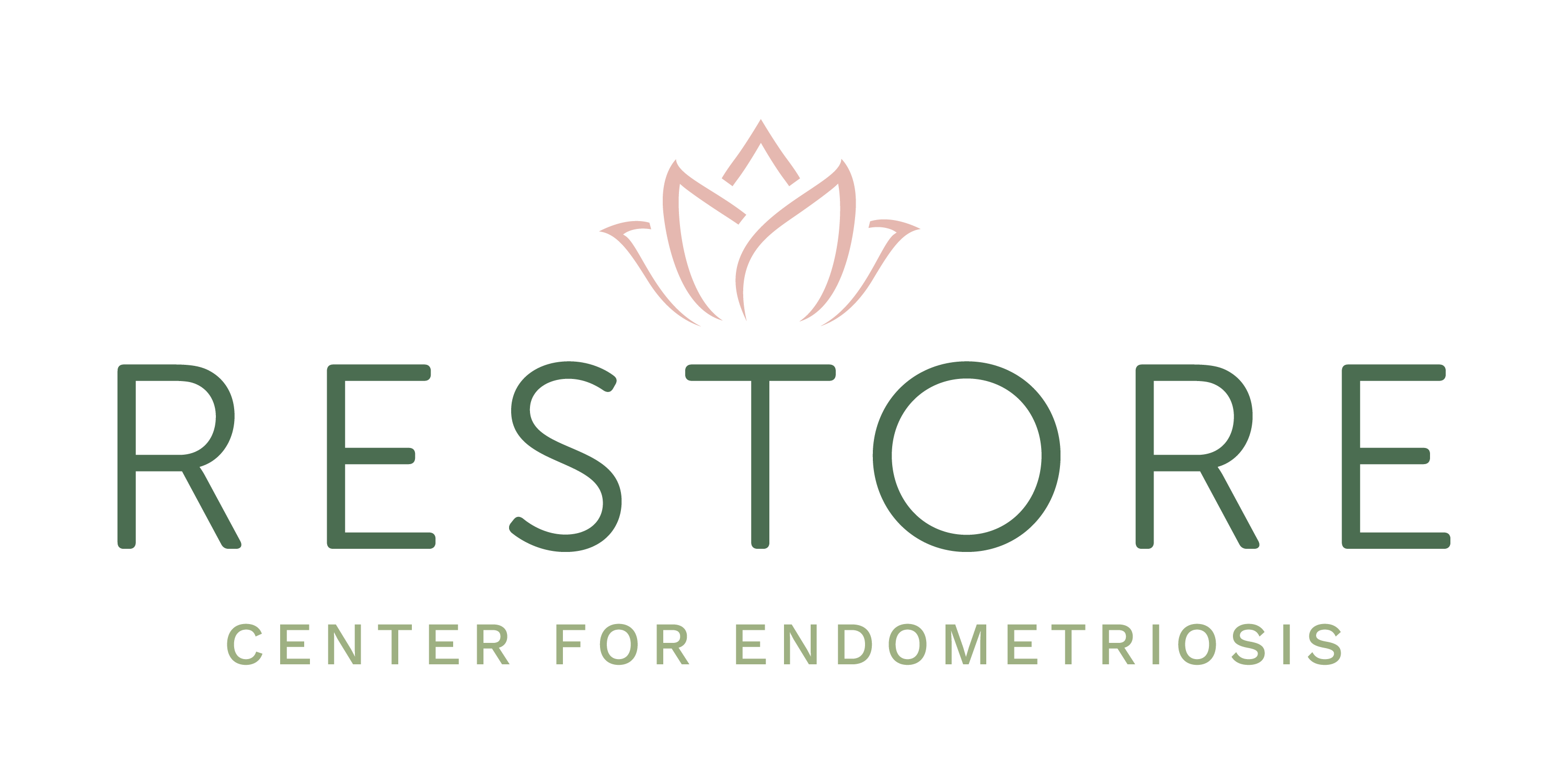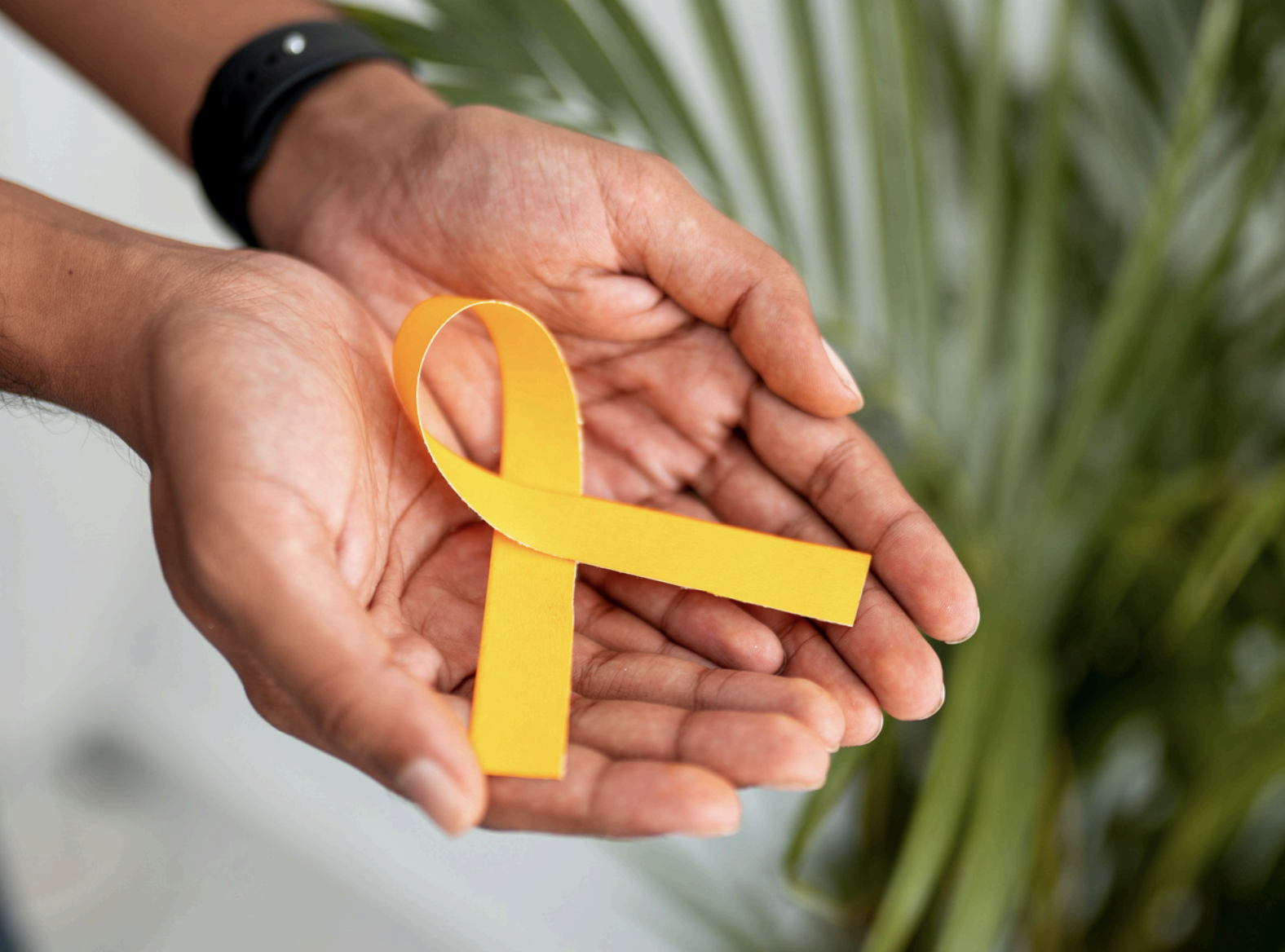
Table of Contents:
Do I have Endometriosis?
Symptoms of Endometriosis
Co-existing Conditions
Diagnosis
Treatment
Do I have Endometriosis?
Endometriosis, a condition where tissue resembling the lining of the uterus grows outside of the uterus, is a common yet challenging diagnosis for many women. The symptoms of endometriosis can often mimic those of other health issues, making it difficult to pinpoint.
Characterized by severe cramping and pain, endometriosis can be a source of discomfort both within the uterus and in areas where abnormal tissue growth occurs. The presence of scar tissue further exacerbates the pain associated with this condition.
Menstrual periods can be particularly painful for those with endometriosis, and fertility issues may also arise. However, with the right treatments, managing the symptoms and complications of endometriosis becomes more manageable.
Symptoms of Endometriosis
Heavy bleeding
If you have to use more than one tampon or pad every two hours, than your bleeding is heavier than normal. Women with Endometriosis often bleed more because The uterine tissue growing outside of the uterus thickens and sheds by bleeding every month you aren’t pregnant.
Sometimes bleeding can occur outside of your normal period as well.
Painful sex
Experiencing pain during sex can be attributed to various factors, but when coupled with other symptoms, it could be a sign of endometriosis, especially deep internal pain with intercourse.
Infertility
High rates of infertility are prevalent among women with untreated or unmanaged endometriosis. It is estimated that a significant portion, up to 50%, of women struggling with infertility may unknowingly be affected by endometriosis even without pain..
Further, analysis of our patient data over 10 years suggests that in women with both pelvic pain and infertility, the rate of finding endometriosis is over 90%.
Gastrointestinal issues
The presence of endometriosis-induced inflammation can disrupt gastrointestinal function, particularly when uterine tissue is in close proximity to the digestive tract. This disruption can manifest as symptoms like diarrhea, constipation, nausea, and discomfort during bowel movements, serving as potential indicators of endometriosis.
Often, gastrointestinal symptoms attributed to irritable bowel syndrome, improve when endometriosis is optimally removed.
Painful Periods
Pelvic discomfort and cramps can often begin prior to menstruation and persist throughout its duration. Symptoms may also include lower back and abdominal pain, commonly referred to as dysmenorrhea.
Co-Existing Conditions
Many women who experience pelvic pain due to endometriosis often find themselves dealing with additional urogynecological disorders that can exacerbate their symptoms. It can be challenging for healthcare providers to distinguish between these overlapping conditions, highlighting the need for expertise in identifying the various sources of pelvic pain.
While endometriosis is a primary culprit for pelvic pain, it's essential to recognize that pelvic discomfort can stem from a combination of factors. The following co-existing conditions frequently accompany endometriosis and contribute to pelvic pain:
Adhesions
Adhesions, bands of fibrotic tissue known as scar tissue, can form between neighboring organs and structures like the ovaries and pelvic sidewall, or the uterus and bowel. These adhesions can vary in thickness, from thin and cobweb-like to dense and thick like hardened glue. They often develop as a result of pelvic disease, infection, or injury. The inflammation linked to conditions like endometriosis can trigger the formation of scarring and adhesions, with surgeries to remove the disease potentially leading to further adhesions as the body heals. Some individuals are more susceptible to developing adhesions than others. In severe cases, it can feel as though a tube of superglue has been inserted into the pelvic cavity, causing structures to fuse together and distort the pelvic anatomy. When adhesions put pressure on or constrict vital structures like the bowel, it can result in symptoms such as pain, bowel obstruction, and nausea. Surgical intervention can help remove painful adhesions, but the challenge lies in preventing them from re-forming during the healing process. Utilizing adhesion barriers and conducting early follow-up procedures to address newly forming adhesions before they become established can offer continued relief for patients.
Adenomyosis
Adenomyosis, a relative of endometriosis, occurs when endometrial tissue infiltrates the muscular walls of the uterus. Hallmark symptoms of adenomyosis include intense uterine cramping that intensifies during menstruation, abnormally heavy periods, low back pain with periods, or cramping-like pain without bleeding. It's important to note that not all women with adenomyosis experience these symptoms.
Interstitial cystitis
Interstitial cystitis (IC) is a persistent bladder condition that often presents symptoms similar to a bladder infection. Common signs include pelvic pain, pressure, discomfort during urination, frequent urination, and a sense of urgency to urinate. Women with IC typically have a reduced bladder capacity, and during a cystoscopy, healthcare providers may observe glomerulations (small capillary bleeding on the bladder wall) and Hunner’s ulcers (lesions on the bladder lining). Though patients with IC often have an experience of someone with recurrent UTI or urinary tract infection, the treatments for IC do not include antibiotics. Unlike endometriosis, IC cannot be surgically removed, but there are various treatment options available to help manage symptoms, such as dietary modifications, medications, bladder instillations.
Pelvic Floor Muscle Spasm
Chronic pelvic pain can lead to a tightening of the pelvic floor muscles, resulting in Pelvic Floor Dysfunction (PFD). Patients with conditions that generate pain, known as ‘pain generators’, like endometriosis (or interstitial cystitis)often develop pelvic floor muscle spasms, causing intense pain triggered by various activities, including pain on insertion during sexual intercourse. Pelvic physical therapy can be a beneficial treatment to alleviate the distressing symptoms of PFD and pelvic floor muscle spasm.
Fibroids
Fibroid tumors, made up of smooth muscle tissue, can form within the walls of the uterus. These growths can range in size from smaller than a marble to larger than a grapefruit, leading to various symptoms if they become problematic. Common issues include heavy periods and increased uterine cramping that intensifies during menstruation.
Uterine Retroversion
In a typical scenario, the uterus is anteverted, slightly tilting towards the bladder. However, in about 1 in 5 women, the uterus is retroverted, leaning backward towards the bowel. While this retroversion is considered normal, it can be linked to lower back discomfort, deep pain with intercourse, and difficult bowel movements. Retroversion may present more symptoms in women with concurrent uterine conditions like fibroids and adenomyosis.
Pelvic Congestion
Enlarged pelvic blood vessels, known as pelvic congestion, uterine varicosities, and ovarian vein varicosities (varicose veins), have been suggested to contribute e to pelvic pain. The management of pelvic congestion may involve conservative methods such as embolization or more drastic measures like organ removal (hysterectomy), depending on the location and severity of the varicosities.
Ovarian Cysts
Functional cysts, such as follicular cysts and corpus luteal cysts, are among the most common non-endometriotic ovarian cysts. These cysts naturally form and resolve as part of the menstrual cycle. At times, they may persist longer than usual, leading to discomfort. The presence of even small to medium-sized cysts can result in ovarian stretching and pain. If scar tissue or adhesions are also present, a functional cyst during the cycle can cause cyclical stretching of the scar tissue, resulting in a painful pulling sensation. In cases of rupture, acute pain may occur. It's important to note that not all cysts cause symptoms, and some individuals may have large ovarian cysts without experiencing any discomfort. Non-functional cysts, such as endometriomas, and dermoid cysts, do not resolve on their own and may require surgical intervention. Imaging techniques can help differentiate between functional and non-functional cysts, providing valuable information for appropriate management.
Ovarian Torsion
When an ovary twists upon itself, it leads to a condition known as ovarian torsion. This twisting results in intense lower abdominal pain and demands immediate medical attention as it signifies a critical situation. Failure to promptly address the torsion may jeopardize the blood supply to the ovary, potentially causing it to malfunction and ultimately leading to the loss of the ovary.
Abdominal Wall Neuropathy
The lower abdominal wall houses the intricate network of the ilio-inguinal, ilio-hypogastric, and genital femoral nerves, stretching from the belly button to the hipbone, and down towards the groin and upper leg. When these nerves sustain damage, a nerve block or trigger-point injection can offer relief; sometimes, a series of nerve blocks can effectively alleviate the discomfort. In certain instances, the innovative approach of radiofrequency nerve ablation may be employed to provide enduring pain relief.
Pudental Neuropathy and Pudental Nerve Entrapment (PNE)
The pudendal nerve, situated alongside the vaginal region, branches out into three main pathways: an anterior branch leading to the clitoris, a middle branch extending to the vaginal and vulvar area, and a posterior branch reaching towards the anus. When this nerve is compromised or entrapped, pain can manifest in any segment of its pathway, often exacerbated by sitting. Treatment options for pudendal neuropathy encompass pudendal nerve blocks, pelvic physical therapy, and in some cases, the surgical nerve release by a specialist.
Ovarian Remnant Syndrome
An ovarian remnant occurs when a small piece of ovarian tissue is unintentionally left behind after the removal of an ovary. This situation can arise if the ovary is fused to surrounding pelvic structures by adhesions before the surgery. To address this, meticulous care is needed to separate the ovary from these adherent tissues without leaving any remnants behind. Ovarian remnant syndrome manifests as pain experienced by the patient due to the presence of the leftover ovarian tissue. Identification of a remnant can be done through the presence of a cyst in the ovarian tissue on ultrasound or by persistently elevated estrogen levels, especially in cases where both ovaries have been removed. Resolving ovarian remnant syndrome typically involves surgically removing the remaining piece of ovarian tissue to alleviate the associated pain and discomfort..
Foreign Body
Foreign objects left in the body after a previous procedure, such as surgical staples and mesh, can lead to pelvic pain. In some cases, these foreign bodies can trigger a persistent inflammatory response known as a foreign body giant cell reaction. Resolving these reactions involves removing the source of the issue. To prevent such reactions from occurring, it is crucial to steer clear of using non-biodegradable foreign materials in the body.
Hernia
Groin hernias, which encompass inguinal, obturator, and femoral hernias, are a common occurrence. However, despite their prevalence, inguinal hernias are not typically a primary cause of pelvic pain. Interestingly, they are sometimes misdiagnosed and wrongly treated with mesh, potentially leading to new sources of discomfort. To avoid this issue, it is advisable to treat inguinal hernias without the use of mesh. In certain cases, patients may experience the development of painful abdominal wall hernias, including umbilical, incisional, and ventral hernias. Fortunately, surgical intervention can effectively address these hernias and alleviate any associated pain.
Appendicitis
In cases of appendicitis, the appendix undergoes inflammation, leading to sudden onset acute symptoms. This includes intense pelvic pain on the right side, often prompting a visit to the emergency room for surgical removal of the appendix. However, there are instances where patients may experience chronic appendicitis or mistakenly attribute their acute pain to conditions like endometriosis, risking a potentially life-threatening scenario if the inflamed appendix ruptures.
Food Sensitivities and Food Allergies
Even though food allergies and food sensitivities differ in technical terms, they can both lead to similar issues. A food allergy, like a reaction to seafood, involves the immune system and can result in symptoms like a rash or difficulty breathing. On the other hand, a food sensitivity, such as lactose intolerance, triggers a response in the body, like bowel spasms.
Gluten, a protein found in various grains, not only can cause celiac disease but is also a common culprit in food sensitivities. The symptoms of gluten sensitivity closely mirror those of celiac disease. While celiac disease damages the gastrointestinal tract lining, severe bowel pain up to a level of 10/10 can be experienced with gluten sensitivity. Additional symptoms may include bloating, diarrhea, skin issues, headaches, and even neurological symptoms like irritability and anxiety. Food sensitivities can also worsen pain in the vulvar area and exacerbate symptoms of interstitial cystitis.
Generalized Visceral Hypersensitivity
Visceral pertains to the internal organs, while hypersensitivity denotes an abnormally heightened sensitivity. In cases of generalized visceral hypersensitivity, the entirety of the body's internal structures may experience discomfort. This phenomenon often arises from the transmission of inappropriate signals by the nervous system, leading to various forms of neuropathic or centralized pain.
Vulvodynia
The vulva, encompassing the outer region of the vagina, is central to the experience of vulvodynia, or "pain of the vulva." This condition presents in two distinct forms: generalized vulvodynia, characterized by pain throughout the vulvar area between the thighs, and vulvar vestibulitis, which specifically targets the vestibule - the delicate region surrounding the vaginal opening within the labia minora. Pain in vulvodynia may manifest intermittently or persistently, affecting different areas with varying levels of intensity. Notably, discomfort in vulvar vestibulitis is triggered only by pressure on the area, such as during intercourse or tampon insertion.
Tests to check for clues of endometriosis include:
To determine if you have endometriosis, your doctor will need to hear your story and take a thorough history. You will be required to articulate your symptoms, and give your medical, obstetric, and surgical history. A thorough assessment of your condition will include a pelvic examination and imaging.
Pelvic Examination
Your healthcare provider will use one or two gloved fingers to assess areas in your pelvis for any abnormalities. These may include cysts on the reproductive organs, tender spots, unusual growths known as nodules, and scarring behind the uterus. Often, small areas of endometriosis may not be detectable unless a cyst has developed.
Ultrasound
This imaging test utilizes sound waves to create visual representations of the body's internal structures. By placing a transducer against the abdomen or into the vagina for a transvaginal ultrasound, a comprehensive view of the reproductive organs can be obtained. While a standard ultrasound may not definitively diagnose endometriosis, it can identify cysts within the ovaries that are suspicious for endometriomas.
A unique use of ultrasound at RESTORE Center for Endometriosis, is to look for and characterize the presence of nodules (deep lesions that have gone beyond the surface) suspicious for endometriosis near or within the bowel wall. This is very important for complete mapping of suspected endometriosis and surgical planning.
Magnetic Resonance Imaging (MRI)
Using a magnetic field and radio waves, an MRI generates detailed images of the organs and tissues within the body. In some cases, an MRI aids in surgical planning by providing your surgeon with information regarding suspicion of deep endometriosis, potential adenomyosis or fibroids.
Laparoscopy
If necessary, you may be referred to a surgeon for this procedure. During a laparoscopy, the surgeon examines the abdomen for signs of endometriosis tissue. Prior to the surgery, you will receive medication to induce a sleep-like state and prevent discomfort. A small incision near your navel allows the surgeon to insert a slender viewing instrument called a laparoscope.
Laparoscopy affords the surgeon the benefits of magnification and illumination, so that the surgeon can see lesions or abnormal areas suspicious for endometriosis even better than the naked eye. Your surgeon may perform a tissue biopsy for further evaluation. With careful planning, endometriosis can often be treated during the laparoscopy, minimizing the need for additional surgeries.
Endometriosis Treatment
Navigating the realm of endometriosis treatment can be a challenging journey for women. With a multitude of perspectives and varying opinions on the best course of action, finding the right approach can be daunting. From suggestions of birth control pills to more extreme measures like pregnancy or hysterectomy, the spectrum of advice can be overwhelming and sometimes misleading.
The ideal treatment approach will be tailored to the severity of your symptoms, encompassing considerations for pelvic pain or infertility. Additionally, it is crucial to assess for any underlying health conditions that may be linked to endometriosis. (Further details on these conditions will be discussed below.)
Achieving a life free from the symptoms of endometriosis pain and reclaiming your well-being necessitates two key elements: a deep understanding of the condition and the skilled expertise needed to provide tailored treatment, honed through valuable experience.
RESTORE Center for Endometriosis offers personalized treatment plans that begin with a Comprehensive Examination to map out areas of concern and guide treatment decisions.
When appropriate, Complete Optimal Excision Surgery produces the best outcomes for removing endometriosis. (only 2.5 % of women who receive this treatment need repeat surgery.)
Ready to Start your healing journey? Contact us to schedule a consultation.
Want to learn more? Check out our patient stories to see
Related Posts




